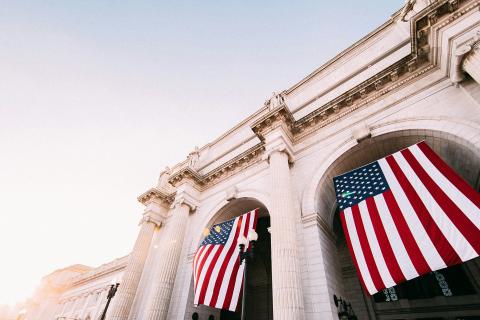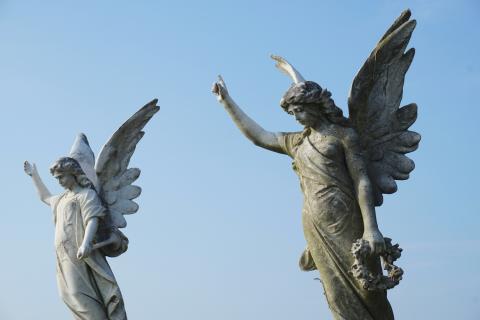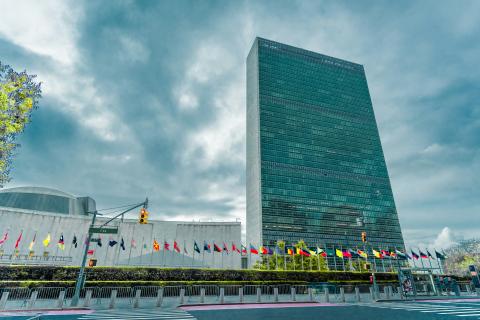
A survey was recently released that tracks trends in the opinions of American Catholic priests. The results showed a stark divide between older and younger generations of priests: of those ordained before 1975, 70% described themselves as progressive. Of those ordained since 2000, only 8% accepted that description, wanting to be identified instead as conservative or orthodox.
But the poll also tracked opinions on Church hierarchy, and here the results were intriguing, too: a huge majority – 86% of all clergy – expressed “a great deal” or “quite a lot” of confidence in Pope Leo.
So what’s so noteworthy about that? One point to flag, perhaps, is simply the way these trends point to a particular “brand” of American Catholicism that’s emerging: a way of being Catholic and American that’s no longer just navel gazing, but being drawn by the election of Pope Leo to maintain a wider optic; a brand, also, that wants to be known as thoroughly Catholic, in an unapologetically orthodox way.
This kind of American Catholicism wasn’t always mainstream. For a long time, that phrase itself – American Catholicism – didn’t congeal easily into a fully recognizable identity. In the late 1800s and early 1900s, for example, there was a huge influx of Catholics in America, but they didn’t necessarily identify as Americans. They were loyal to their respective ethnic enclaves, and viewed themselves as being somewhat at odds with American culture. World War II changed all that. In the post-war world, American Catholics could get affluent for the first time in their history – some so much as doubled their salaries in the space of ten years. The GI Bill meant that they could enter the professional world and be known as respectable executives and doctors and lawyers and leaders. And then, in the wide culture, figures like Fulton Sheen, but also folks like Perry Como and Frank Sinatra, became Catholic darlings of the nation. Suddenly, Catholics had been folded into the heart of the country’s life: they had become unquestionably American.
…But this also meant that they didn’t always view themselves as quite so unquestionably Catholic. Because, for so long, it was the rule that to be Catholic was to be on the cultural outskirts, it’s no surprise that when the door opened to being on the “in,” it was a door that was firmly taken. But shortly thereafter, perhaps especially with the accession of John Paul II, a more traditional and clear way of thinking about Catholicism began to reemerge. A generation of Catholic youth started to come of age who, unlike the baby boomers, weren’t trying to “fit in” to America. The anxiety that perhaps they weren’t "quite" American had been shrugged off. They just were American. And so the pendulum swings started to come to a halt. These young people started asking: yes, we’re American. So how are we Catholic?
The result is that from roughly 2000 on, what has started coming into its own is a truly American Catholic Church. There’s an American way of doing things that marks our Catholic institutions: an instinct for hard work, good citizenship, leadership, getting things done. But there’s also an instinct for orthodoxy that this most recent poll signals. That impulse seems to be toward being fully identifiable as Catholic, in the fullness and depth of what that might mean.
It's intriguing, then, that it’s at this moment that an American Pope has been elected. God is full of surprises, and his purposes are far beyond human speculation. But we seem to be living in a moment in which the puzzle of our age is how to live as Catholics in the midst of a highly technologized, highly electronic, highly affluent society. This isn’t the circumstance everywhere, of course; but it is the circumstance in a fair portion of the world, in a way that’s never been true ever before. Who’s to lead the charge in sorting out just how we’re meant to do that? How we’re meant to embrace the Gospel, in all its perilous and astonishing meaning, in the midst of a kind of culture that’s more materially comfortable, more technologically sophisticated, than any other culture the world has ever seen?
It seems the American Catholic Church has been, and is being, equipped to play its role in responding to just that sort of a question. The “universal Church,” to her members, has often seemed like a far distant reality – something being handled by others, in lands far away. But in Pope Leo’s election the universal Church has come much closer. There are challenges and opportunities the world seems to be facing that we’ve found ourselves in the center of, too. And whatever Providence may bring from this confluence of circumstances, it surely will be worth looking out for.


